Loomis Chaffee School
| The Loomis Chaffee School | |
|---|---|
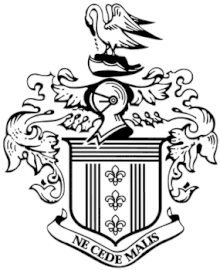 | |
| Location | |
|
Windsor, Connecticut United States | |
| Coordinates | 41°50′24.17″N 72°38′25.96″W / 41.8400472°N 72.6405444°WCoordinates: 41°50′24.17″N 72°38′25.96″W / 41.8400472°N 72.6405444°W |
| Information | |
| Type | Private, boarding, day |
| Motto | Ne Cede Malis |
| Established | 1914 |
| Head of school | Sheila Culbert |
| Faculty | 160 |
| Enrollment | 690 |
| Average class size | 11 students |
| Student to teacher ratio | 5:1 (4:1 boarding student-to-residential faculty) |
| Campus size | 300 acres (1.2 km2) |
| Color(s) | Maroon and gray |
| Athletics | 55 interscholastic teams in 18 sports; 19 intramural offerings |
| Mascot | Pelican |
| Endowment | $175 million |
| Website |
www |
The Loomis Chaffee School (LC or Loomis) is an independent school, or college preparatory school, for boarding and day students grades 9–12, including postgraduates, located in Windsor, Connecticut. Loomis Chaffee is a member of the Ten Schools Admissions Organization.
History
The school was chartered in 1874 by five siblings who had lost all their children and were determined to found a school as a gift to the children of others.
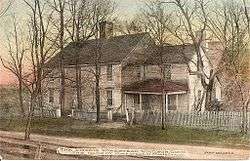
The roots of Loomis Chaffee run as far back as 1639, when Joseph Loomis and his family first settled at the confluence of the Farmington and Connecticut River. Several generations later, the inspiration for the school was born out of family tragedy, when, in the early 1870s, four Loomis brothers and their sister had outlived all their children.
As a memorial to their own offspring, and as a gift to future children, they pooled their considerable estates to found a secondary school called The Loomis Institute to educate young persons, "hoping and trusting that some good may come to posterity, from the harvest, poor though it be, of our lives."[1] The original 1640 Loomis Homestead was chosen as the site where their dream would become reality.
James Chaffee Loomis, Hezekiah Bradley Loomis, Osbert Burr Loomis, John Mason Loomis, and Abigail Sarah Loomis Hayden planned a school that would offer both vocational and college preparatory courses. (Vocational offerings were discontinued during the later development of the school.) The institution would have no religious or political admission criteria. Boys and girls would be given as free an education as the endowment would allow. The Loomis Institute opened its doors in 1914 to 39 boys and five girls. In 1926, their girls’ division broke off to focus more closely on girls’ educational issues and became The Chaffee School.
Both schools continued to expand. The Loomis Institute built several new facilities in 1967, and the two schools reunited in 1970, forming The Loomis Chaffee School. Six years later it began admitting girls as boarders. The reunification led to a major revision of the curriculum, which combined a demanding basic program with a broad range of electives in art, music, philosophy, religion and other subjects.
The Loomis Chaffee School has enjoyed a period of unprecedented growth since the 1970s. It strengthened its endowment to bolster financial aid and broadened the diversity of the student body. Recent additions to the school are Norton Family Center for the Common Good, The Alvord Center for Global & Environmental Studies, and The Henry R. Kravis '63 Center for Excellence in Teaching.
Overview
Facts and figures
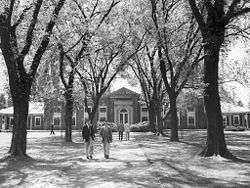
- 300-acre (1.2 km2) semi-rural campus in historic Windsor, Connecticut (settled 1633)
- 5-to-1 student-to-faculty ratio
- 4-to-1 boarding student-to-residential faculty ratio; 13 dormitories with 32 live-in faculty families
- 180 courses (regular, advanced and Advanced Placement) and independent study
- Average class size: 11
- 55 girls and boys interscholastic teams in 18 sports; 19 intramural sports offerings
Finances, tuition and financial aid[4]
- $175 million endowment; $44 million annual operating budget
- $2.8 million in Annual Fund contributions (2010–11) with 82% of current parents participating
- $49,220 boarding tuition; $37,570 day tuition (for the 2012–13 school year)
- $7.9 million in need-based financial aid awarded to 34% of student body
The students (2016-17)[5]
- 690 enrollment
- 70% boarding students, 30% day students
- students represent through citizenship and/or residency more than 40 countries and 30 U.S. states
- 25% students of color, 16% international students
- SAT: The middle 50 percent of the students in the Class of 2016 scored in the following range on the SAT: Critical Reading 590–690*, Mathematics 600–710, Writing 580–690* (*includes TOEFL-eligible students)
The faculty[6]
- 179 members
- 108 advanced degrees (98 Masters, 10 Ph.D.)
- 50% male, 50% female
- 55% of full-time teaching faculty at Loomis Chaffee for 10 years or longer
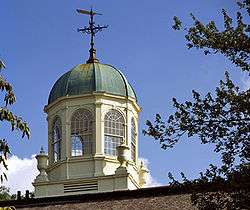
Academics
Loomis Chaffee offers courses in Arabic, Chinese, psychology, writing workshop, videography, English, Latin, Spanish, French, art, dance, history and social science, mathematics, music, philosophy, religion, science and theater arts. Noncredit diploma requirements include library skills, and physical fitness and health. Advanced Placement courses are offered in 20 subjects.[7] The Norton Family Center for the Common Good and the Alvord Center for Global & Environmental Studies work to engage the student body with the wider community and world by means of visiting speakers and international study opportunities.[8]
Athletics
All students participate in interscholastic, intramural or daytime athletic programs each trimester. Interscholastic varsity and junior varsity competition for boys and girls is offered on 55 teams in baseball, basketball, cross country, field hockey, football, golf, ice hockey, lacrosse, skiing, soccer, softball, squash, swimming/diving, tennis, track, volleyball, water polo and wrestling. There are an additional 19 intramural sports, including both team sports and "lifetime and leisure" sports like yoga and weight lifting. Freshman-level teams are offered in soccer, lacrosse, field hockey, boys basketball and boys tennis.
Facilities include a double gymnasium and two other gymnasia, supporting basketball and volleyball courts; a fitness center and a weight room, totaling 6,300 square feet (590 m2); a 25-meter, six-lane swimming pool; an enclosed hockey rink; a 400-meter, eight-lane, all-weather track; eight international squash courts; 17 tennis courts; a 3.1-mile (5.0 km) cross-country course; two baseball diamonds; two softball diamonds; 17 fields for football, soccer, lacrosse and field hockey; and a golf practice driving range, putting green and sand trap.
Music
More than 40 percent of students participate in some sort of music program. Students have a wide range of classes to choose from including orchestra, chamber music, concert band, concert choir, concert singers, jazz band, and much more. There are also many student-run clubs and organizations such as Musical Revue, Open Mic nights, and Acapelicans. Practice rooms and studios are also open on weekdays and Sundays for practice, lessons, and rehearsals.
Students have many opportunities to listen to performances in recital samplers, seasonal major ensemble concerts, guest musician visits and performances, the student-run Musical Revue, Connecticut regional and state competitions and festivals, and student-inspired recitals, projects, and productions. Guest musicians often join students for masterclasses in orchestra, chamber music, band, and other classes.
Musicians also take part in festivals each year. The 2018 Connecticut All-State High School Festival in Hartford featured selected vocal and instrumental musicians Cameron Purdy '18, Noah Yoon '18, Sarah Gyurina '18, Makayla McPherson '20, Emma Kane '21, Clara Chen '21 and Ethan Levinbook '20.
College guidance
Five full-time college counselors guide students through the college search and application process. Eighty-six percent of the members of the Class of 2010 were admitted to colleges and universities deemed most competitive or highly competitive by Barron’s Profiles of American Colleges, with sixty-six percent matriculating at the most competitive institutions.[9]
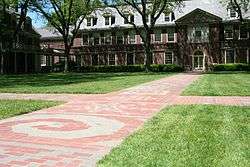
The Loomis Chaffee Log
The Loomis Chaffee Log is a student-run, school-sponsored newspaper. Its readership includes students, faculty, parents, and alumni. Published monthly by a team of student editors, the Log is now in its 101st year. It recently launched an online edition, thelclog.org, to stay current with growing trends in today's media. A second paper, The Maroon & Grey, created by Caleb Rudnicki '15 and William Meng '16, has been published to provide students with satirical content about issues ranging from school topics to worldwide news. Unfortunately, recently, Maroon and Grey has been terminated.[10]
Traditions
- Loomis and Kent School have a long-running athletic tradition. On November 11, 1921, the Kent football team played Loomis on the Island and despite a strong showing of the home team, Loomis lost 14 to 7. After the game, as was the custom of the day, the boys from both teams showered and went to the headmaster's home where Mrs. Batchelder served them tea. Once the Kent boys returned home, the Batchelders discovered that a silver teaspoon, one from a wedding set belonging to the Batchelders, was missing. Mr. Batchelder wrote to Father Sill, Kent's founder, about the missing spoon. Heated words were exchanged defending the honesty of the young men at each school until finally, the matter was dropped. In June 1922, the guilty young Kent football player went to Father Sill and confessed. At Father Chalmers thirty-fifth anniversary dinner years later, Kent's new headmaster told the whole story and offered the spoon back to Mr. B. who graciously declined. He insisted that the spoon stay at Kent. Father Chalmers then suggested that a large spoon serve as a permanent football trophy to be held by the victorious school. Kent would secure the spoon "to in someway... return to Loomis for our keeping borrowed property."[11] The two schools take this historic enmity quite seriously, and have annual Kent vs. Loomis days. The two schools competed for the spoon and the bowl until 2013, when, due to new rules in the Erickson Football League, Kent pulled out of the football game, leaving the two schools to compete only for the bowl.
- The Senior Path is a brick pathway running through the middle of the Grubbs Quadrangle. Tradition holds that only seniors, PGs, and graduates are allowed to walk the length of the path. As each class heads into its final months at Loomis, the soon-to-be-graduates design a new section of brick to be laid.
- Traditionally, the third floor of Founders' Hall, the tunnels, and some parts of the health center are rumored to be haunted.
Notable alumni
References
- ↑ "History & Origins of Loomis Chaffee". Loomischaffee.org. Retrieved February 26, 2011.
- ↑ "Facts & Figures". Loomischaffee.org. Retrieved February 26, 2011.
- ↑ "Key Facts 2011–12". Loomischaffee.org. Retrieved December 2, 2011.
- ↑ "Key Facts 2011–12". Loomischaffee.org. Retrieved December 2, 2011.
- ↑ "Key Facts 2016–17". Loomischaffee.org. Retrieved June 25, 2017.
- ↑ "Key Facts 2011–12". Loomischaffee.org. Retrieved December 2, 2011.
- ↑ "Key Facts 2011–12". Loomischaffee.org. Retrieved December 2, 2011.
- ↑ "Key Facts 2011–12". Loomischaffee.org. Retrieved December 2, 2011.
- ↑ "College Guidance". Retrieved 18 June 2012.
- ↑ Loomis Chaffee Log, thelclog.org; accessed June 6th, 2017.
- ↑ "Loomis Chaffee Website". Retrieved November 8, 2012.
External links
| Wikimedia Commons has media related to Loomis Chaffee. |